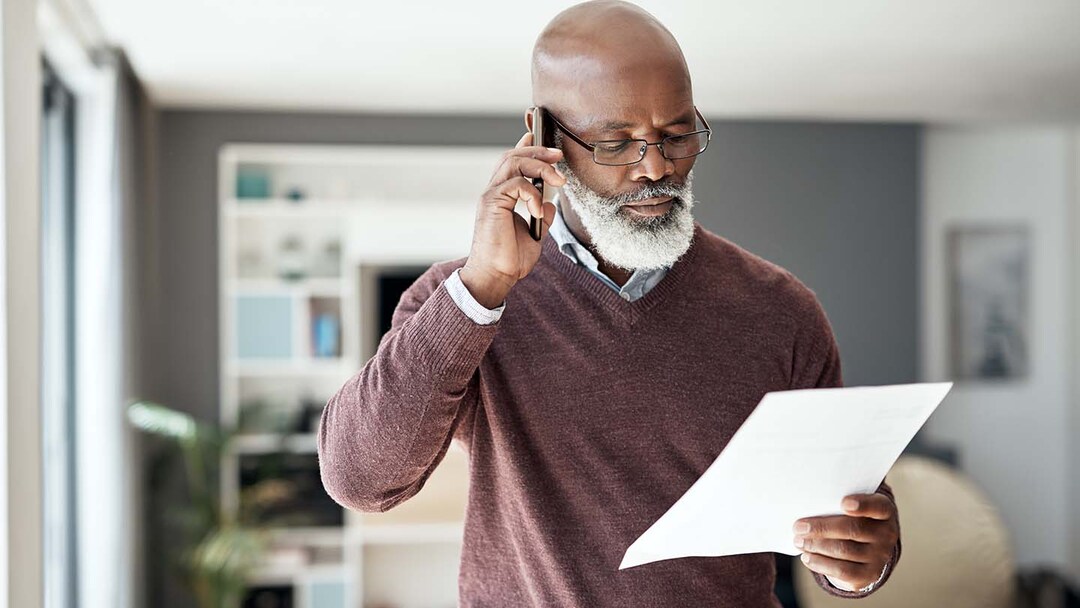Stop payment: How does it work?

Have you ever had someone lose a check you wrote to them? Or perhaps you've needed to end a recurring payment because you're canceling the service. This is when stop payment orders may come in handy.
A stop payment order enables you to stop a payment on a check or automatic debit payment from processing through your bank account. Read on to learn more about stop payment orders and how they work.
What is a stop payment?
A stop payment is a request from an account holder to a financial institution, such as a bank or credit union, to not process a payment. The payment may be a paper check or an automatic debit payment, like those you set up for a recurring subscription or bill.
Stop payments must be requested relatively quickly after you write the check or before the payment is scheduled, in the case of automatic debits. That's because your bank may not be able to reverse the process once the payment clears. Generally, you may want to notify your bank as soon as you know you need the payment halted.
Reasons to stop payment
There are multiple reasons you may need to make a stop payment request on checks, automatic debit payments or other eligible transactions. Some may be simply because of misinformation that resulted in payment to the wrong organization, while others may prevent fraudulent activity. Here are some of the most common reasons for issuing a stop payment order:
- The check was lost or stolen: In these cases, you may want to stop payment on the original check and send the payee a new one.
- The check contains an error: You may want to stop payment on the original check so that you may issue a new one that has accurate information.
- The check was sent to the wrong address: Stop payment requests prevent a stranger from cashing a check meant for someone else.
- You were scammed or subjected to fraud: Perhaps someone promised to sell you something and never delivered the item. A stop payment may prevent a fraudster from taking your money.
- You are canceling a membership or recurring utility payment: Stopping the payment via your bank ensures the payment no longer goes through.
How to issue a stop payment order
The process of issuing a stop payment order varies based on your bank or financial institution. For example, some banks may require a phone call to provide verbal consent, while others may prefer written permission. Some banks may also charge a fee for issuing a stop payment.
It's important to note that you may only stop payment on checks that haven't been cashed or automatic payments that have yet to go through.
Contact your bank to learn more about its stop payment order policies, whether it charges a fee to cease payment and what details you may need to provide to complete the request. Here are some standard ways to potentially stop payment on various payment methods.
How to stop payment on a check
Once you realize you need to stop payment on a check, you may want to act as soon as possible. To complete the stop payment order before the check is fully processed, follow these steps:
- Confirm the check hasn't cleared: As previously noted, you may not stop payment on checks that have already been cashed.
- Gather all the check information: Be ready with your checking account number, the check number, information about the person or organization you were paying, the check amount and check date.
- Contact the bank to place a stop payment order: Follow the process outlined by your bank, whether that's filling out a form or connecting with a bank representative on the phone.
Once the bank receives the request, it will flag the check and stop the payment from clearing your checking account.
How to stop payment on automatic debit payments
Stopping payment on other recurring debit payments, like subscriptions and utility bills, is similar to stopping payment on a check. Follow these steps to stop payment on automatic debit payments:
- Confirm the debit hasn't cleared: It's generally much more challenging to stop a payment after it's already been processed through your deposit account.
- Gather all the payment information: This includes your checking account or savings account number, payee information, the payment amount and the date of the payment.
- Contact the bank to make a stop payment request: Follow your bank’s policy to ensure you make the request prior to the date the payment is set to clear. If your bank requires written notification, you may also need to provide that within 14 days of making a verbal request.
Once the bank receives the order, it will typically flag the automatic debit payment and stop it from clearing your deposit account. However, the stop payment doesn't eliminate the bill's balance or mean you don't owe a company money.
You may also need to contact the organization to cancel your contract. Otherwise, the company may keep sending you bills. Also, if you cancel automatic payments on a loan, you're still required to make your loan payments.
What to do after issuing a stop payment
After issuing a stop payment, it’s helpful to monitor your bank statements and transaction history for any potential charges. If your bank still processes the payment, you'll most likely need to dispute the charge with your financial institution. For this reason, it's essential to save any emails or documentation of your stop order request.
If you see a charge you don’t recognize, you have other options beyond a stop order request. Connect with your bank to see how they handle these and what you may do to remove the charges.
Other stop payment considerations
Before you decide to make a stop payment order, there are a few things to consider.
How much are stop payment fees?
In some cases, banks charge a fee for making a stop order request. The fees vary by financial institution, the type of account you have and the payment you're stopping. Stop payment requests may also be free depending on your bank.
How long does a stop payment on a check last?
Stop payment orders aren't permanent. Instead, they usually expire after a certain amount of time. Generally, state law requires that banks maintain stop payment orders received in writing for at least six months. After that, the check may be cashed, though many financial institutions may not cash checks older than six months.
Verbal stop payment orders expire after 14 days, according to federal regulations. However, your specific bank may honor the request for longer. For these reasons, it's important to check with your financial institution about its stop payment policies, so you understand how long your stop payment will last.
Can you stop payment on cashier's checks and money orders?
Stopping payment on a cashier's check or money order isn't usually possible. That's because cashier's checks and money orders work differently from checks. Stop payments on cashier’s checks are handled differently as they are funds guaranteed by the issuing bank.
Contact your issuing bank for their specific guidelines on the stop payment of cashier's checks and money orders. There may be stipulations based on if the cashier check or money order is returned to the issuing bank, or there is a specific period of time before replacement funds are available.
Final word on stop payments
Your bank will generally allow you to stop payment on a check or automatic debit payment, assuming the check or payment haven’t been processed.
However, you may still owe the payee money, depending on the circumstances. For example, if you stop payment on a car loan, you may still owe the lender your monthly payments if there is still a balance due. Or if you stop payment on a check for a medical bill, you may still owe the service provider money.
Also, it may be considered fraud if you purchase items and then stop payment on the checks in order to avoid paying for them.
If you've made a mistake on a check, lost a check or need to stop an automatic debit payment, consider connecting with your bank as soon as possible. That way, you may make the stop payment request correctly and prevent any payment from clearing your bank account.



